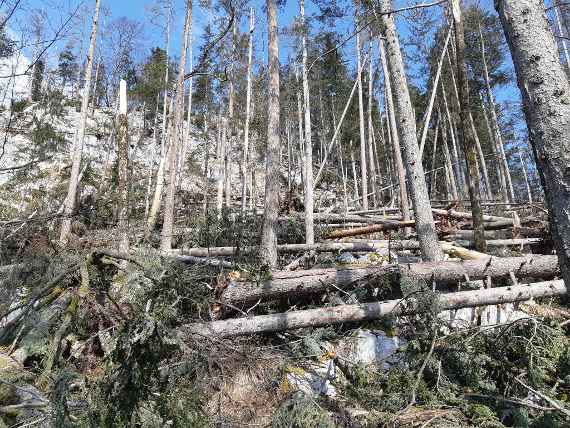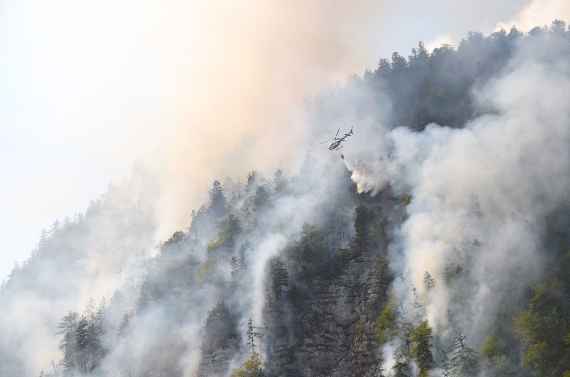The stability and vitality of the forest dependon many factors. Disturbances such as uprooted trees, snow damage, mass reproduction of harmful insects or forest fires are natural in the forest ecosystem and occur at irregular intervals. However, in protective forests with a focus on the prevention and mitigation of natural hazard processes, such disturbances may be critical. Therefore, specific management is important to further increase stability of the forest stand. At the same time, the impact of game and our behaviour as forest visitors are important. We don't light fires in the forest and stay on the trails to minimize disruption to wildlife as little as possible.
Climate change also poses a threat to the forest. This is because higher temperatures and less frequent precipitation will cause tree species to no longer feel comfortable in their current environment and may not be able to survive. Therefore, a tree species composition that is adapted to the future climate is important to provide long-term protection against natural hazards.
In this area strong winds and heavy gusts caused major damage to the forest stand. Many trees were uprooted, some trunks broke. Looking ahead, this means that fewer stable trees will be available to successfully mitigate natural hazards (in this picture, rockfall). The lying logs are still strong and act as a natural barrier - but over time they become rotten and are less and less able to fulfill its task.
Forest fires are still rather rare in the Alps, however in future warmer climates the danger will increase! Not only the trees themselves, but also the soil with its litter layer is flammable. Strong erosion and increased rockfall activity are the result, especially after heavy precipitation events such as summer thunderstorms.


